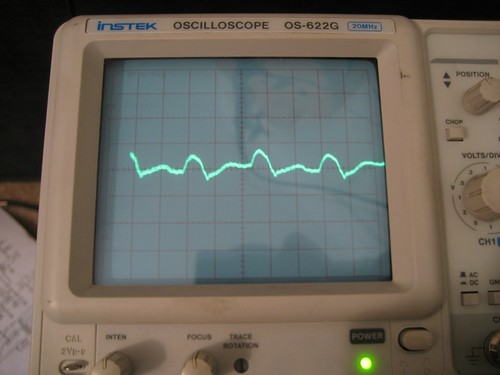Here's the schematic, should be a workable link: http://zhyla.net:4000/files/dev/bass...m_modified.jpg
Ok, I recapped with 3 brand new 33 uF caps. No change. I was expecting this but it was good to remove all doubt.
On the 6SC7 the grid pins and plates are close together (it goes plate 2, grid 2, grid 1, plate 1). I haven't shielded the grid wires. I think I have some shielded cable around here somewhere. But given that the noise persists when the preamp tube is pulled I don't think this is my problem.
What did you think of my replies above to Enzo's questions? It sounds like the phase inverter stage is where the problem is. Do you agree? The last plate and cathode voltages I measured are below, in case that helps. The phase inverter stage is the one I understand the least.
phase inverter plate, V2a 43.8
phase inverter plate, V2b 45.2
phase inverter cathode, V2a 0.905
phase inverter cathode, V2b 0.87
Maybe both my 6SL7GT tubes are bad and just noisy?
Ok, I recapped with 3 brand new 33 uF caps. No change. I was expecting this but it was good to remove all doubt.
On the 6SC7 the grid pins and plates are close together (it goes plate 2, grid 2, grid 1, plate 1). I haven't shielded the grid wires. I think I have some shielded cable around here somewhere. But given that the noise persists when the preamp tube is pulled I don't think this is my problem.
What did you think of my replies above to Enzo's questions? It sounds like the phase inverter stage is where the problem is. Do you agree? The last plate and cathode voltages I measured are below, in case that helps. The phase inverter stage is the one I understand the least.
phase inverter plate, V2a 43.8
phase inverter plate, V2b 45.2
phase inverter cathode, V2a 0.905
phase inverter cathode, V2b 0.87
Maybe both my 6SL7GT tubes are bad and just noisy?



Comment